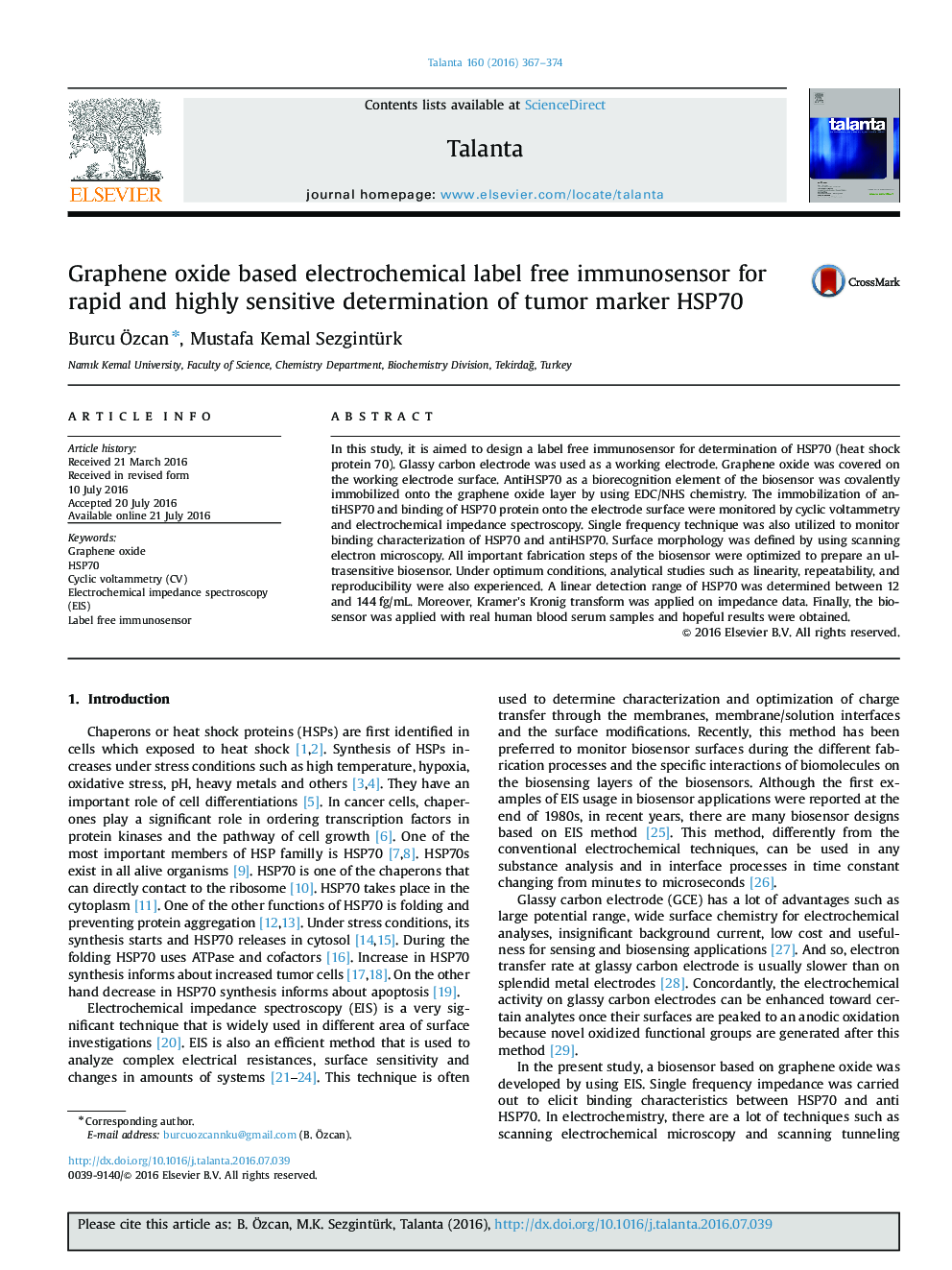| کد مقاله | کد نشریه | سال انتشار | مقاله انگلیسی | نسخه تمام متن |
|---|---|---|---|---|
| 1243270 | 1495776 | 2016 | 8 صفحه PDF | دانلود رایگان |

• Single Frequency Impedance was used for identifying the antibody-antigen interaction.
• The new biosensor showed high analytical performance with a linear range 12–144 fg/mL.
• CV, EIS and SEM methods were used for characterization of the electrode surfaces.
• Kramers Kronig transform was performed on the experimental impedance data.
• Single frequency impedance technique was used for characterization of interaction between HSP70 and anti HSP70.
In this study, it is aimed to design a label free immunosensor for determination of HSP70 (heat shock protein 70). Glassy carbon electrode was used as a working electrode. Graphene oxide was covered on the working electrode surface. AntiHSP70 as a biorecognition element of the biosensor was covalently immobilized onto the graphene oxide layer by using EDC/NHS chemistry. The immobilization of antiHSP70 and binding of HSP70 protein onto the electrode surface were monitored by cyclic voltammetry and electrochemical impedance spectroscopy. Single frequency technique was also utilized to monitor binding characterization of HSP70 and antiHSP70. Surface morphology was defined by using scanning electron microscopy. All important fabrication steps of the biosensor were optimized to prepare an ultrasensitive biosensor. Under optimum conditions, analytical studies such as linearity, repeatability, and reproducibility were also experienced. A linear detection range of HSP70 was determined between 12 and 144 fg/mL. Moreover, Kramer's Kronig transform was applied on impedance data. Finally, the biosensor was applied with real human blood serum samples and hopeful results were obtained.
Immobilization process of the designed biosensor.Figure optionsDownload as PowerPoint slide
Journal: Talanta - Volume 160, 1 November 2016, Pages 367–374